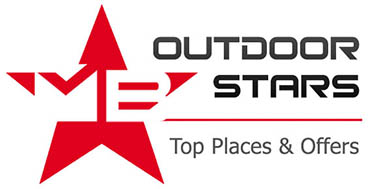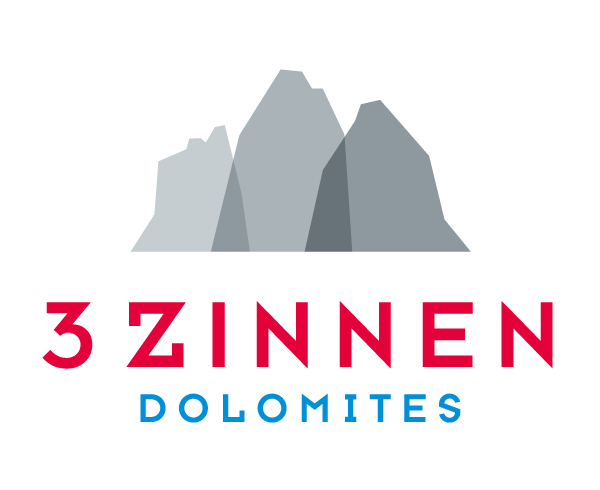Why travel far when hidden between the majestic peaks of South Tyrol’s Alta Pusteria/Hochpustertal lies a true vacation paradise. The quaint valley with its villages of Sesto/Sexten, San Candido/Innichen, Dobbiaco/Toblach, Villabassa/Niederdorf and Braies/Prags offers the perfect mix for a truly relaxed and unique summer escape.
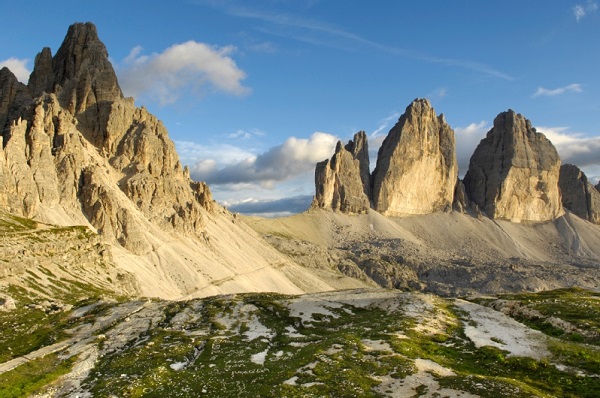
1. You are what you eat – Culinary delights in the Alta Pusteria
Highest quality standards and close ties to their roots are the number one characteristics that mark South Tyrol’s Alta Pusteria region and make such a big difference it can even be tasted – at the Alpe Pragas manufacture for example, which uses only the best fruit right from the valley for its delicious jams, or at the cheese dairy Three Peaks/Drei Zinnen in Dobbiaco, where visitors are taught interesting facts about the art of dairy processing and cheese making. Many restaurants and mountain cabins invite guests to try traditional South Tyrolean cuisine including dumplings, “Schlutzkrapfen” and other culinary delights to nourish body and soul.
2. For sports enthusiasts and nature lovers – Hiking the Alta Pusteria
Those looking for a gentle, easy-going start should take the one-hour family-friendly hike around Lake Braies, which is set against a beautiful backdrop of lush greens and mountain peaks. The more ambitious might continue on from the lake to the alpine huts “Colle Alti” and the “Lago dei Colli Alti”, one of the most beautiful lakes in the Dolomites.
3. The power of water – Kneipp therapy in the Alta Pusteria
Want to give those tired feet an extra treat after a long day of hiking? Italy’s first Kneipp Active Park “Kneipp für mich®” in Villabassa features both standard elements like cold-water treading and facial and arm baths as well as options like a barefoot path, early morning walks in the wet grass, an “outdoor inhalatorium”, a drinking pavilion and, for sore feet, anti-inflammatory and cooling mudpacks.
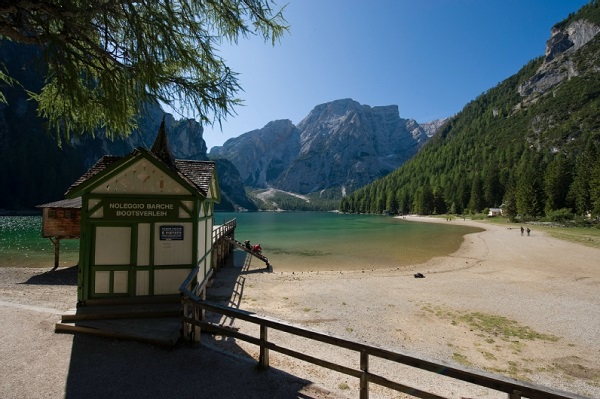
4. For a refreshing summer splash – Taking a dip in Lake Dobbiaco
Taking a dip on a hot summer day in Lake Dobbiaco, a true natural jewel, is great fun and a wonderfully refreshing experience for the entire family while enjoying unique views of the Landro valley. There are a non-swimmer’s and a regular pool. Both are chlorine-free and kept clean naturally in two separate treatment areas.
5. Made in heaven – The Dolomites, a UNESCO World Heritage site
Anyone who has ever visited the Alta Pusteria will be drawn back over and over again to this quaint valley, not least because of the fascinating landscape around the area’s famous landmark and UNESCO World Heritage site, the Three Peaks, an attraction both during summer and winter. This is where majestic mountains join scenic valleys, where lush Alpine meadows are found next to green forests, and picturesque lakes join unspoilt creeks and springs.
INFO: Alta Pusteria
The Alta Pusteria region is far more than just breath-taking landscapes and a wide range of outdoor adventures: The charming valley with its villages Sexten, Innichen, Toblach, Niederdorf and Prags also boasts some true cultural highlights, from the colourful “BERG_SOMMER” in Sexten, the renowned Alta Pusteria International Choir Festival and the South Tyrol Jazz Festival Alto Adige through the International Street Theatre Festival OLALA and the Gustav Mahler Music Weeks – for a magic summer in the Dolomites.
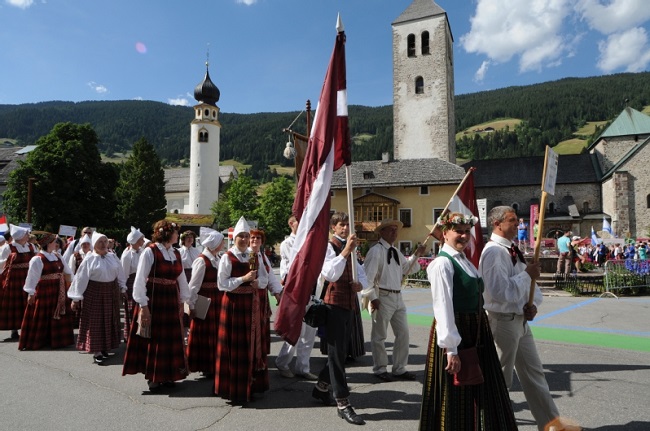
The Sexten BERG_SOMMER (mountain summer) event series, which starts in June and runs through October, puts the imperishable, beautiful UNESCO world heritage property at the centre of attention. During the “BERG_KUNST” (mountain art) program Berlin-based plein air artist Christopher Lehmpfuhl captures the beauty of the Dolomites right there on site, while for “BERG_WISSENSCHAFT” (mountain science) scientists introduce during one week the world of astrophysics in a way that makes it easy to understand even for lay people, and the BERG_KULTUR (mountain culture) days in fall feature informal discussions about the “megatrend Dolomites”.
Lovers of the fine arts should mark their calendars for the following Alta Pusteria cultural events: Choirs from all over the world gather during June 22 -26 for the 19th Alta Pusteria International Choir Festivall to celebrate their passion for singing. One of South Tyrol’s largest cultural events, the South Tyrol Jazz Festival Alto Adige, takes place from June 24 through July 3 at various destinations throughout the region and guests are able to enjoy concerts in impressive settings. On July 29 fourteen groups from eight different countries flock to the quaint village of Innichen for the International Street Theatre Festival OLALA to delight their audiences with extraordinary, funny and colourful performances.
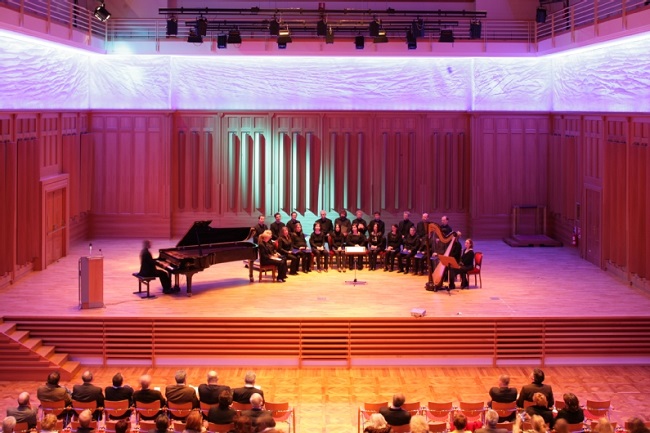
The Gustav Mahler Music Weeks make for another summer season highlight. This year, the internationally renowned high-class music festival dedicated to Gustav Mahler’s works and tradition is scheduled from July 16-28. Another music-centred event is the Alto Adige Festival from July 30 through September 16, with the Haydn Orchestra of Bolzano and Trento as the “orchestra in residence” as well as various other well-known orchestras presenting a mix of classic and cross-over.
NFO: Alta Pusteria
Mountain bikers, rock climbers, alpine runners and mountaineers alike love the Dolomites for the ever new choice of challenges and the majestic backdrop they provide. This summer’s event schedule for the Alta Pusteria/Hochpustertal region features a sheer endless array of sporting highlights, starting out with the Dolorock Climbing Festival in the Val di Landro, followed by the Cortina-Toblach Run, which leads along a historic railway track. In July, visitors get the chance to take part in the legendary Dolomiti Superbike and the Adventure Outdoor Fest Innichen, an action-packed fun sports platform. The season closes with the Drei Zinnen Alpine Run, one of the most impressive and toughest mountain races in the Alps.
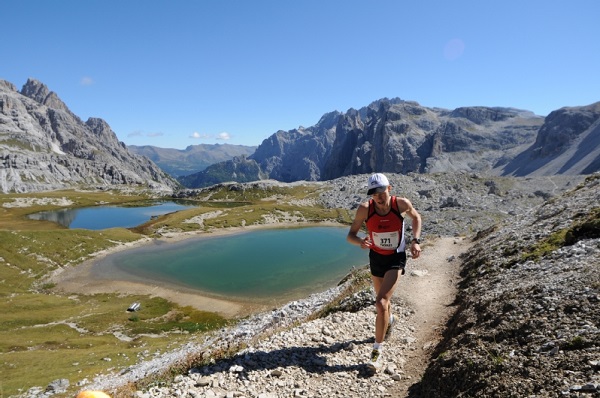
For rock acrobats: The 3rd Dolorock Climbing Festival / Val di Landro
An established event in the scene, the Dolorock Climbing Festival takes place May 27 – 29, 2016 in the Alta Pusteria/Hochpustertal region, a true paradise for any rock climber. This is the place to live their dream and compete against some of the biggest names in the field. www.dolorock.com
For endurance runners: The 17th Cortina-Toblach Run
Runners participating in the Cortina-Toblach Run should mark their calendars for July 5, 2016. The 30-kilometre run follows the historic railway track between Cortina d’Ampezzo and Toblach, crossing rugged landscapes, leading through tunnels and over spectacular bridges. www.cortina-dobbiacorun.it
For bike lovers: Dolomiti Superbike
On July 9, 2016 the Alta Pusteria/Hochpustertal region welcomes the toughest mountain bike race in the Dolomites, the 22nd Dolomiti Superbike – one of the most famous bike marathons worldwide, featuring a 119 kilometre tour through the Dolomites, a UNESCO World Heritage Site. www.dolomitisuperbike.com
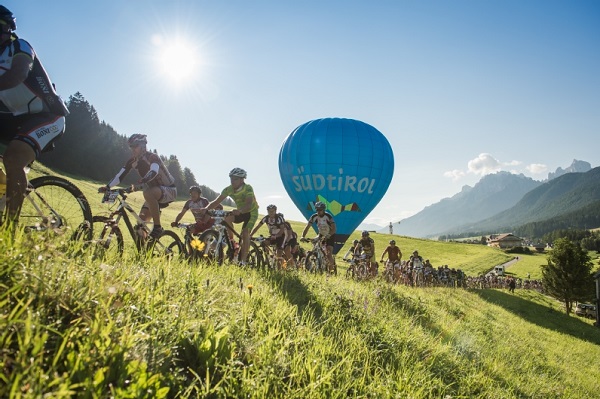
For the adventurous: The Adventure Outdoor Fest / Innichen
The Adventure Outdoor Fest takes place July 20 through 24, 2016 in Innichen featuring fun sports activities such as highline, parkour, rock climbing, mountain biking, running and yoga. Classes, conferences and demonstrations, workshops, film projections in the evening and an exciting kids’ program are also part of the five-day event. www.adventureoutdoorfest.com
For cross-country lovers: The 19th Drei Zinnen Alpine Run
Its incredible mountain backdrop makes the Drei Zinnen Alpine Run one of the most scenic mountain races in the world. At 17.5 kilometres with a vertical drop of 1,350 metres the run is also one of the most challenging races of its kind. On September 17, 2016 the event goes into its 19th edition. www.dreizinnenlauf.com
INFO: Alta Pusteria
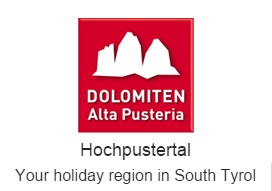 Life in harmony with nature: Set against the majestic backdrop of the Dolomites in South Tyrol, the Alta Pusteria/Hochpustertal region takes sustainability and ecological awareness beyond being just a catchy idea. The communities of Sexten, Innichen, Toblach, Niederdorf and Prags actively support a series of projects from different areas and incorporate green concepts in everyday life and tourism. Activities range from renewable energy supplies for as many households as possible, a powerful public transport network and environmentally focused hotels, to the annual Toblach Talks, a discussion forum on sustainability which touches even sensitive issues and has developed quite a number of efficient resolutions.
Life in harmony with nature: Set against the majestic backdrop of the Dolomites in South Tyrol, the Alta Pusteria/Hochpustertal region takes sustainability and ecological awareness beyond being just a catchy idea. The communities of Sexten, Innichen, Toblach, Niederdorf and Prags actively support a series of projects from different areas and incorporate green concepts in everyday life and tourism. Activities range from renewable energy supplies for as many households as possible, a powerful public transport network and environmentally focused hotels, to the annual Toblach Talks, a discussion forum on sustainability which touches even sensitive issues and has developed quite a number of efficient resolutions.
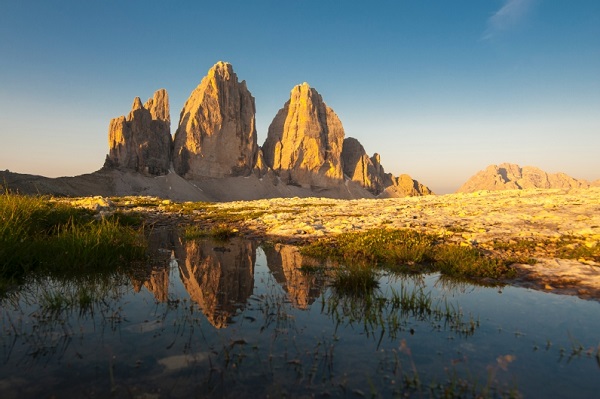
Green energy: Full speed ahead! The Toblach district heating power station, which uses wood chips, bark and saw dust to produce energy and heat, was designed to keep carbon dioxide emissions below the level of previously bound CO2. More than 1,000 households in Toblach and Innichen are supplied with renewable energies from this source. Compared to the cost of fuel oil this creates annual savings of four million euro. A special trail presents the way biomass is used to produce power. It is part of the district heating power station and the only trail of its kind in Europe.
The Alta Pusteria mountain gondolas, too, rely on green energy: The Sextener Dolomiten AG uses power that originates solely from South Tyrolean hydropower sources, thus reducing CO2 emissions by 3,680.5 tons annually.
Green think-tank: The Toblach Talks Founded in 1985 by Hans Glauber, the Toblach Talks have grown to become a renowned think-tank for issues relating to the ecological turnaround in the Alpine region. Once a year, experts from various fields, scientists, community officials, and business and tourism representatives meet at the Grandhotel Toblach to discuss topics like “Soil: War for the last resource” or “Wealth without growth”. In addition to the green think-tanks the Toblach Talks Academy, too, organises training programmes and supports energy restructuring programs in the Alta Pusteria communities along with various projects focusing on energy efficiency, mobility, tourism and agriculture.
Sustainable products: You are what you eat! Whether it is at home or when eating out: Sustainable and regional products play an important role in the Alta Pusteria. From breakfast jam to cheese snacks, the destination boasts a great variety of locally produced specialties. Many manufacturers even open their doors to visitors. This helps build trust and raises awareness of the products’ origins. Beekeeper Ewald Kamelger e.g. offers in Niederdorf a programme called “Visiting the beekeeper and his honey bees”, which provides exciting insights into his work and explains the importance of bees for the region’s biodiversity.
The Regiohof Toblach is another perfect example for sustainability: Its orchards are maintained in line with highest ecological standards. The fruit is made directly on site into high-quality preserves and tasty chutneys, and these are then sold at the Regiohof’s shop in Toblach. There are also more and more organic farms that operate their own shops, including the Bioland-certified Ranerhof in Innichen, the Demeter-farms Baumgartnerhof in Toblach and Schneiderhof in Sexten, and the Bio-Beef Hackerhof in Toblach.
Food lovers with a taste for local products can now refer to the new “Quality Partner” seal. It is given to hotels serving mostly dairy products from the area, from the Drei Zinnen alpine dairy and the Sexten cheese dairy for example. This does not only support mountain farmers but is also beneficial for the environment.
INFO: Alta Pusteria
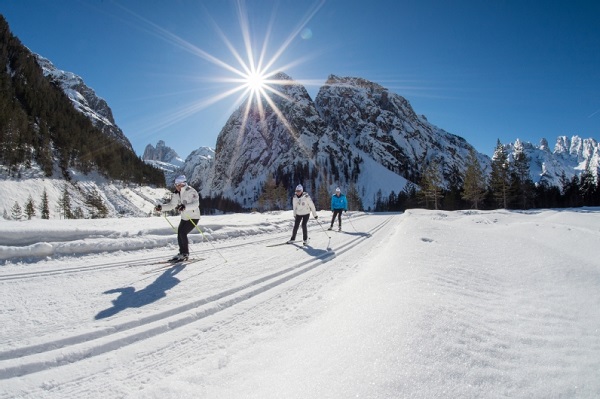
For a cross-country skiing holiday, there is no better place than Alta Pusteria. Why is that so? The five municipalities of Sesto-Sexten, San Candido-Innichen, Dobbiaco-Toblach, Villabassa-Niederdorf and Braies-Prags offer about 200 km (124 miles) of perfectly groomed cross-country skiing trails with guaranteed snow conditions, framed by a stunning landscape part of the UNESCO natural heritage: the Dolomites!
Moreover, a consistent price-list (weekly ticket for 25.00€, season ticket for 60.00€) enables guests to use only one ticket for all available trails marked on the map of this area: this is a dream coming true for all cross-country skiing fans! Enjoy a tour from Braies, moving on to Villabassa, passing by Dobbiaco, San Candido and Sesto, ending up in the enchanting Val Fiscalina valley.
When talking about Nordic skiing, a special touch is given by the wonderful trails on the high-altitude plateau of Prato-Piazza-Plätzwiese. Trails are already prepared and groomed in November, and offer an exceptionally beautiful panorama.
And – there is more! Have an extraordinary winter season enjoying cross-country skiing by night: at the cross-country skiing trail of Sesto (1 km/0.6 miles) with a direct linkage to Moso-Moos open from 5pm-9pm, and the Nordic Arena of Dobbiaco open from 6pm-8pm.
Those who are not ready to face the ambitious trails yet, find an ideal solution at the cross-country skiing stadium Nordic Arena in Dobbiaco. It is unique of its kind in structure and classification, and offers trails approved by the International Ski Federation FIS of diverse difficulty grades. Many are used for training sessions by international teams. In fact, three famous Olympic athletes have given their names to the following tracks: “Monika” (5 km/3.1 miles), “Nathalie” (7.5 km/4.6 miles) and “Albert” (10 km/6.2 miles).
To complete the holiday experience, many associated accommodation structures of the Dolomiti Nordicski located in the five municipalities of the Val Pusteria-Pustertal valley offer dedicated services to all cross-country skiers, as hotel owners are familiar with their guests’ needs. They are happy to offer advice on the most beautiful slopes, and sometimes they reveal some suggestions about lesser-known and secret spots in the Dolomites.
Finally, here is some advice for all cross-country skiers: the holiday pass enables convenient and unlimited travelling on ski buses in the Val Pusteria valley and public transport of all kinds (regional trains excluded) in South Tyrol and Cortina during winter season 2015/16. Guests who stay at accommodations, which are part of the local tourism association, get free tickets directly at their hotel.
INFO: Alta Pusteria











